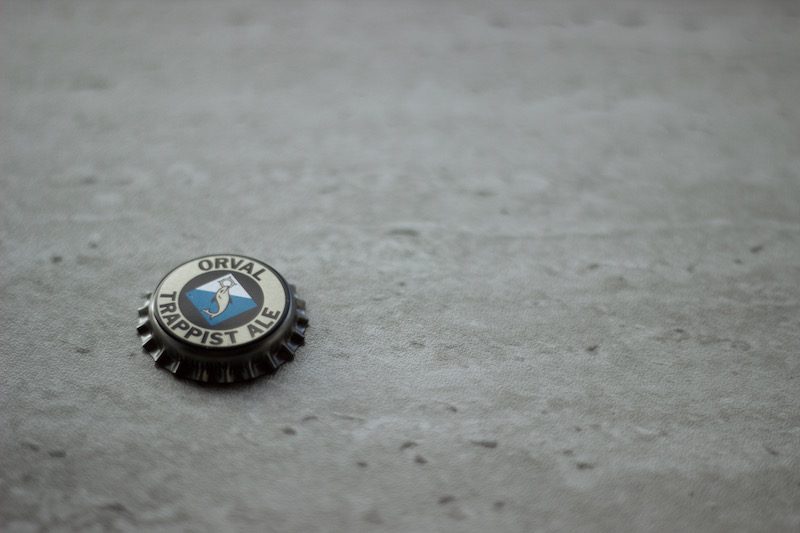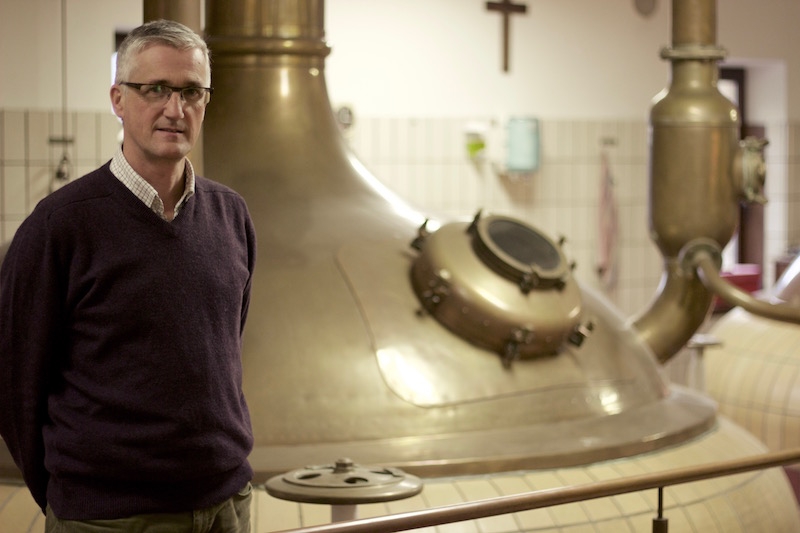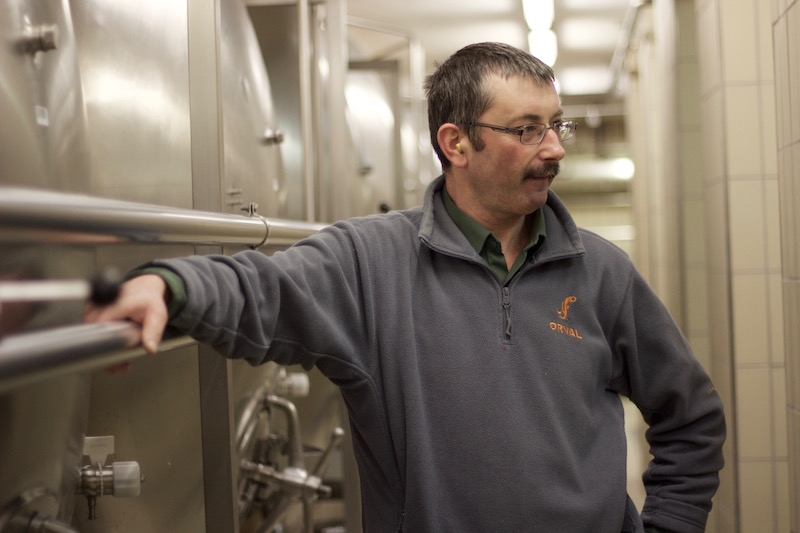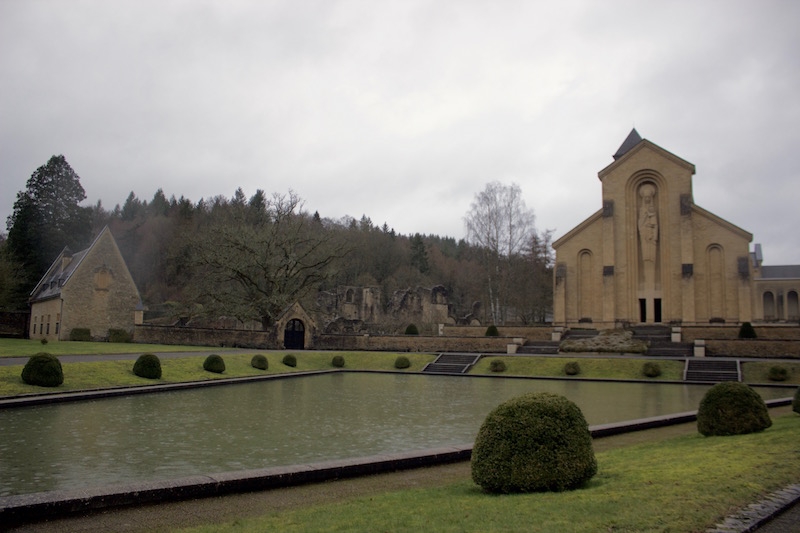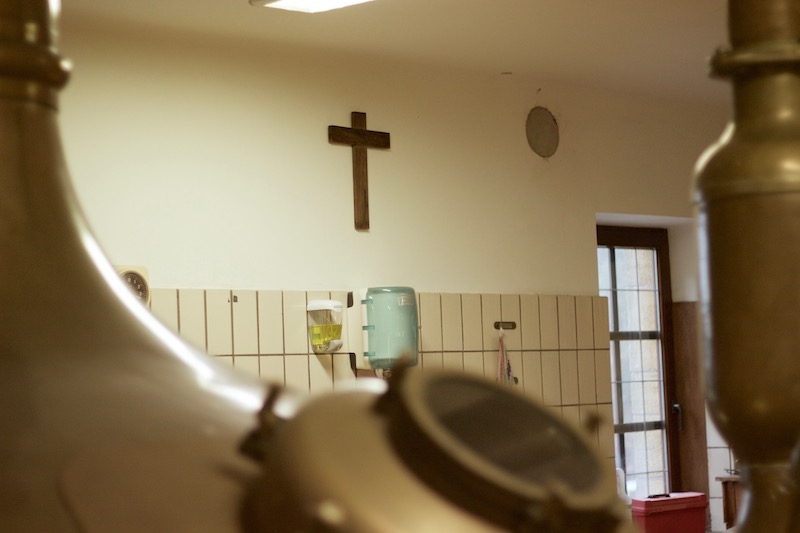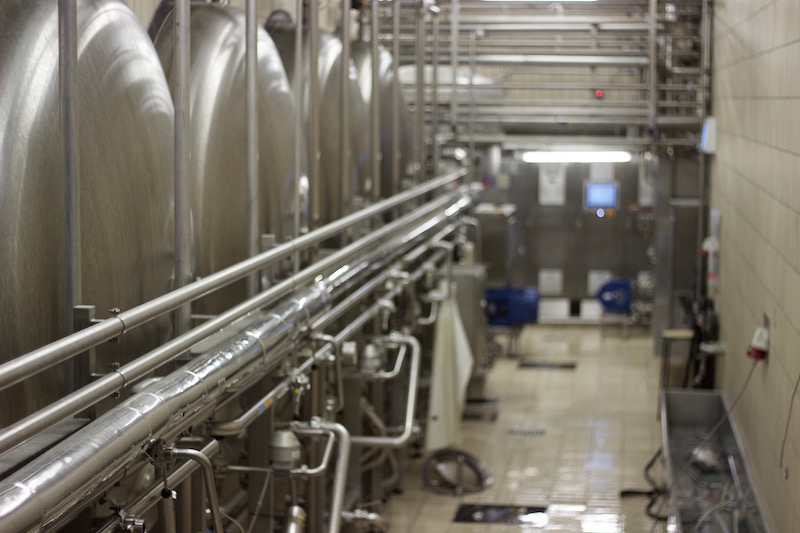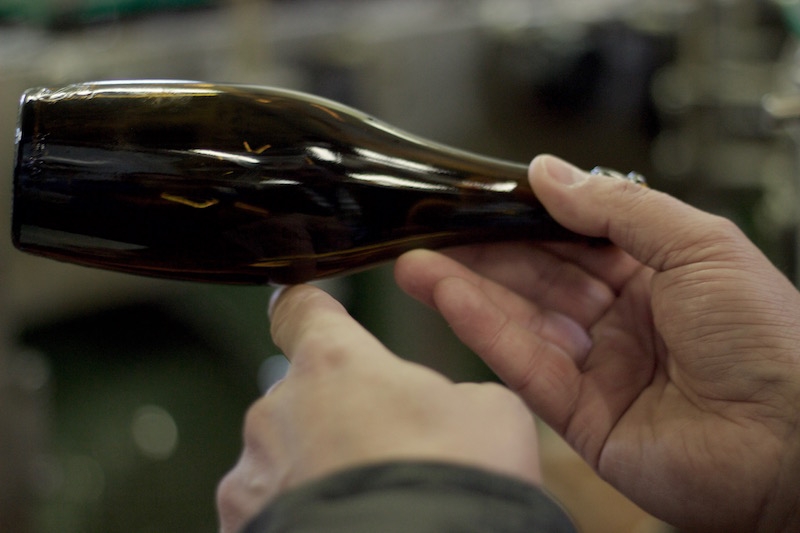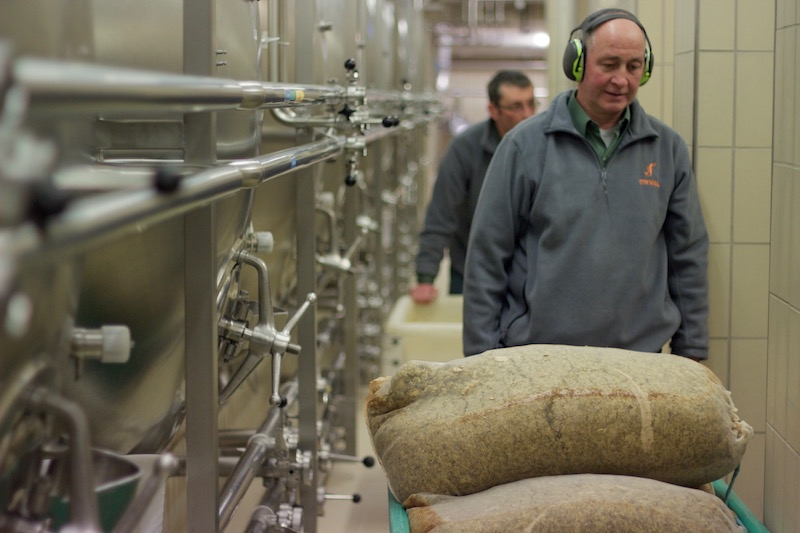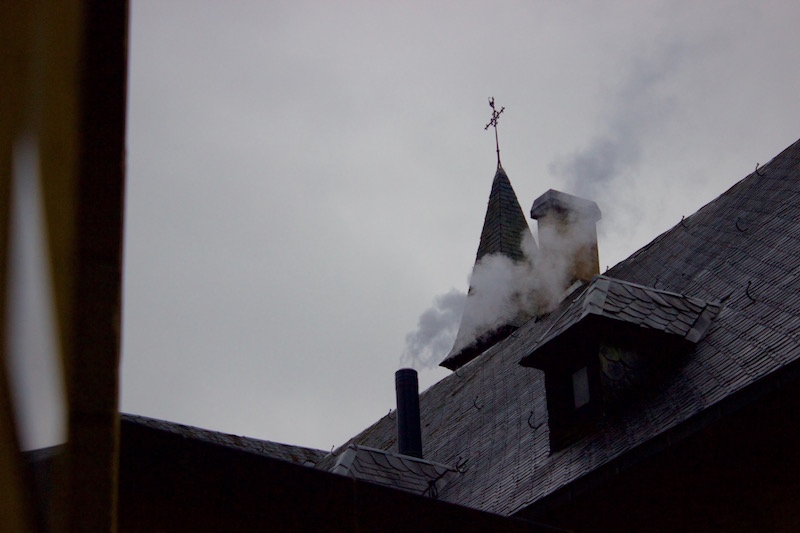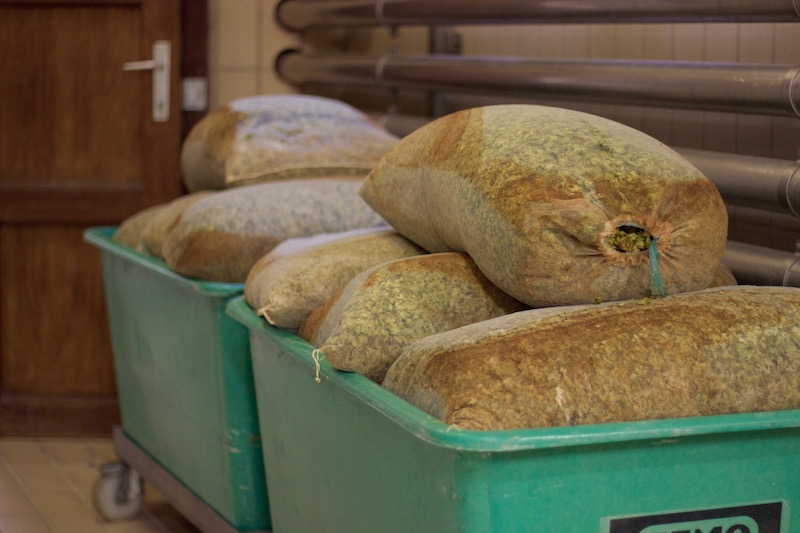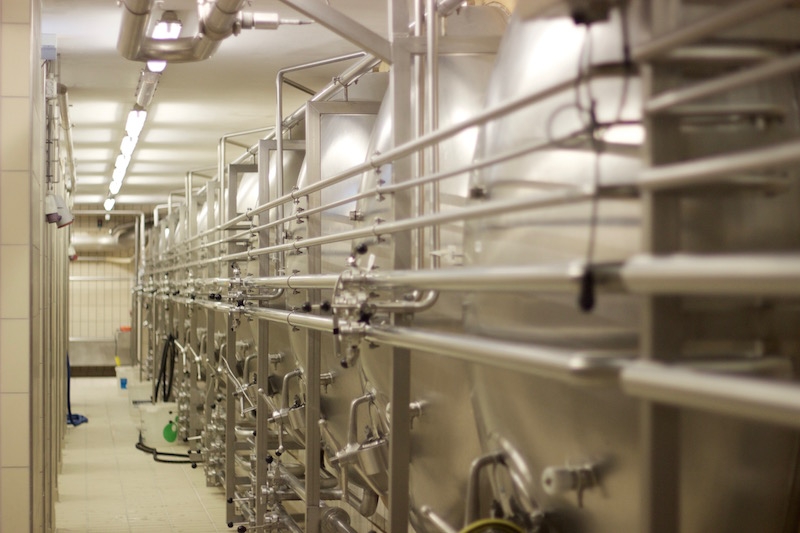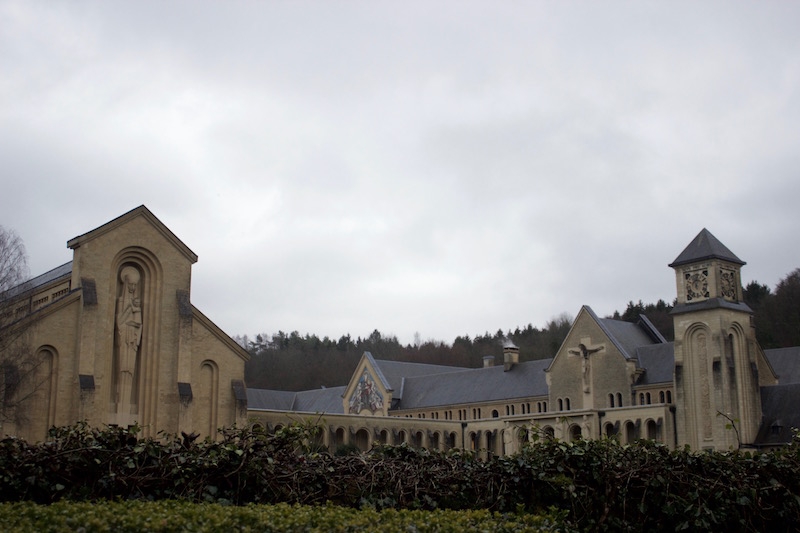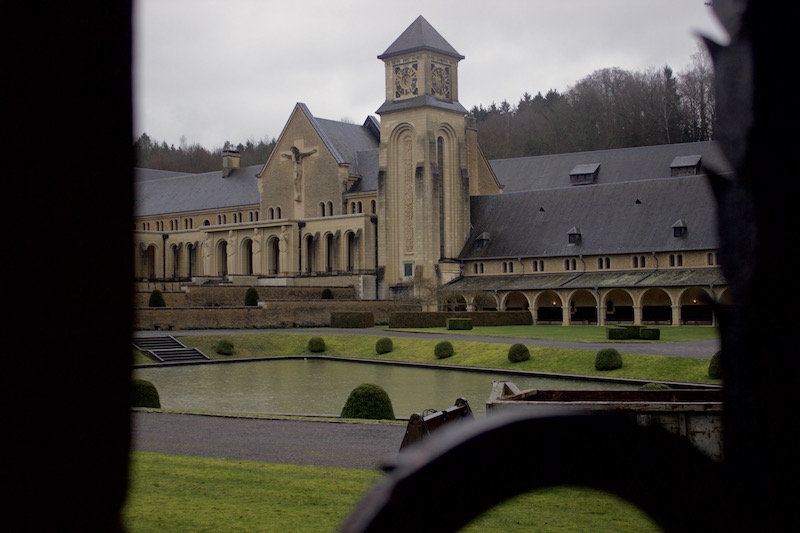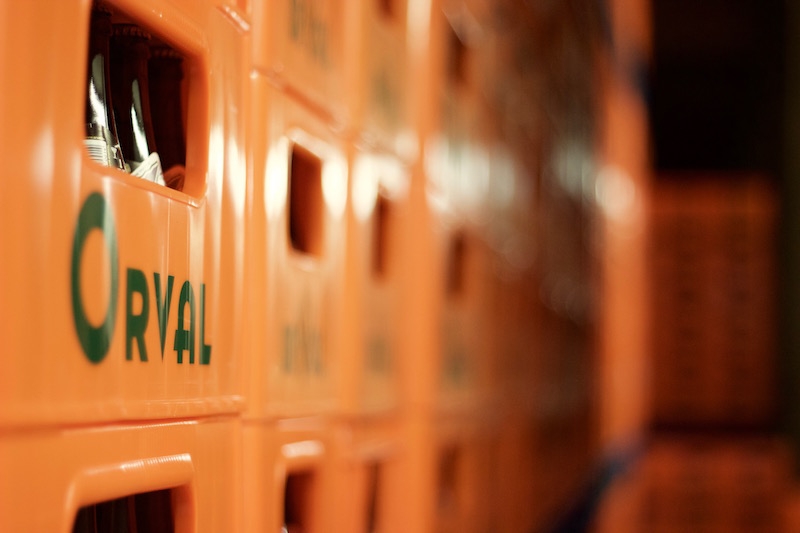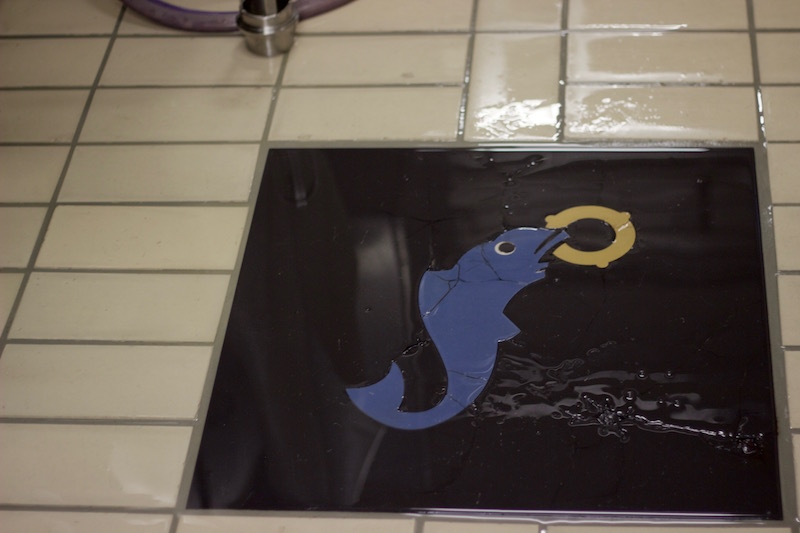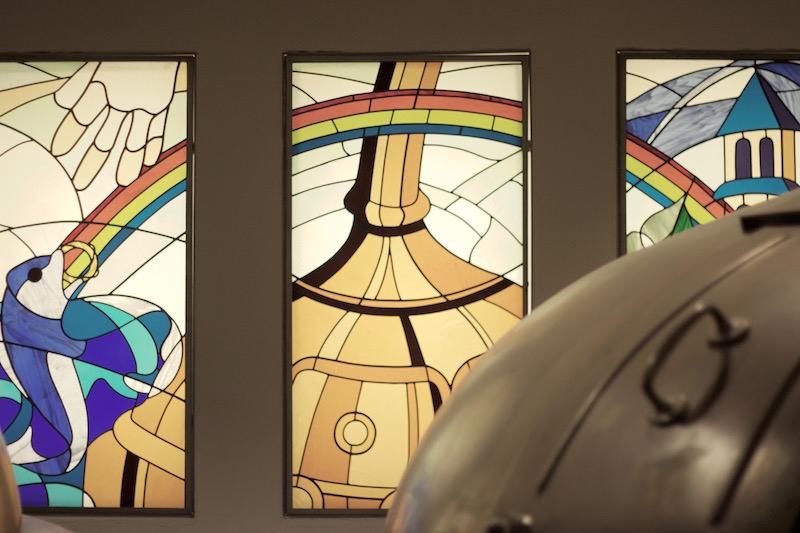In 2013 a number of high profile publications, including Forbes and the Independent, published erroneous stories about Brasserie d’Orval – the producer of Orval Trappist Ale – and how it was in danger of running out of beer due to decreasing numbers of monks to make it. They focused on the fact that the Trappist Abbaye Notre-Dame d’Orval on which the brewery is situated is home to 12 monks where once there were over 100.
The knee-jerk reaction among beer consumers was that of panic. Orval Trappist Ale completely disappeared off the shelves in Belgian supermarkets and bottle shops. The Abbey was flooded with calls which ranged from genuine messages of concern to voluminous requests for the beer.
The incident highlighted just how iconic Orval Trappist Ale has become. But it has not always been as highly respected and sought out as it is today. Annual production of the beer in 2000 was just 32,000 hectolitres as opposed to the 72,000 hectolitres produced in 2015. “It used to be different,” says Philippe Hendroz, General Manager at the brewery. “Fifteen years ago, it was very difficult to sell Orval.”
ORVAL TRAPPIST ALE
One major reason suggested by Philippe for the growth in popularity of Orval Trappist Ale is a rise in appreciation of the Trappist story. The Abbey was built in 1070, became Cistercian in 1132 and was destroyed during the French revolution. Reconstruction began in 1926 and was funded by the establishment of the brewery. “In the last 15 years, people have become more aware of Trappist beers,” says Philippe. “We are brewing inside an Abbey in beautiful surrounds. The objective of the brewery is the same as it was in 1931. It was first to have money to build the Abbey, but now to maintain the Abbey and for social help.”
Trappist beers constitute a certified designation of origin, assessed once every five years by the International Trappist Association. It’s nothing to do with style and everything to do with where the beer comes from. It must be brewed within the walls of a Trappist monastery; the monastic community must determine the policies and provide the means of production; and a significant share of the income must be used for the needs of the community and for social projects.
It’s often assumed that the monks do the brewing. This has never been the case at Orval. It’s a modern brewery with state of the art equipment and a team of 35 professional lay brewing staff. “I work closely with the monks,” says Philippe. “I have contact on a daily basis with Brother Xavier. There is a board of directors made up of 4 monks and 3 lay people. We meet with them 4 times a year. My mission is to ensure that the business goes in the direction that they want.”
“For every €100 that the brewery makes, €45 goes to the monks,” says Orval guide and local historian, Claude Roulant. “Of that €45, the majority goes to the poor and the rest goes to the monks to live off.”
Misconceptions about Orval and rumours about its ongoing viability have been frequent. So aggressive was the influx of media to the Abbey as a consequence of the erroneous stories in those high profile publications that the monk responsible for the brewery, Brother Xavier, felt it necessary to issue an open letter on their website explaining that the monks supervise (and always have done) a strong lay team.
“Journalists have assumed that there is some concern for our future,” the letter reads. “It is our duty to tell you informally that this perception does not really match the reality of the past, present, or future. Our brewery has existed since 1931. From the outset, our beer production was entrusted to secular employees in the region, because the monastic community at the time was primarily occupied by the work on the farm and the cheese making. Unlike at other Trappist breweries, here at Orval, monks have never been directly involved in the production of beer. The number of monks in the community is not directly related to the amount of beer produced, let alone the justification of any trade secret.”
The letter goes on to explain the details of the monks’ involvement as well as some pretty creative and poetic comparisons from Brother Xavier between fermentation in the bottle and the mystery of the gospel.
PROGRESSIVE THINKING
While the brewery’s primary goal is to preserve the original and very particular taste of Orval Trappist Ale, they show no signs of being stuck in the past. Orval brew on a modern system, one that was completely updated in 2007. The fully automated kettles are stainless steel, albeit covered in a layer of copper which is in keeping with the old-school monastery surroundings. Efficiency is high. “Nothing is lost,” says Claude. “We use everything.”
A team of 6 brewers head up a staff of 35 in the brewery. In the cellars, there are 38 stainless steel conditioning tanks. A bottling team made up of 3 people operates a huge automatic bottling machine from Germany which does 24,000 bottles per hour.
This progressive thinking permeates into human resource. When head brewer, Jean-Marie Rock retired in 2013, it was his long-term assistant brewer Anne-Françoise Pypaert who replaced him. By doing so, Anne-Françoise became the first female head brewer at a Trappist Abbey.
When Anne-Françoise started at Orval in 1992 she was one of the first female brewers in Belgium and encountered an industry almost exclusively dominated by men. Joining Orval straight out of university, she has never worked a day anywhere else. She was promoted to Director of Quality Control in 1995 and went on to become second in command to Jean-Marie Rock. In addition to the beer, she is also responsible now for the production of 300 tonnes of Trappist cheese every year, some of which is matured with Orval Trappist Ale.
It’s been innovative since it first started. Two of Orval’s earliest brewers brought techniques from other countries. Hans Pappenheimer came from Germany and is largely credited with coming up with the recipe for Orval Trappist Ale. His assistant came from East Flanders and having studied brewing in England before arriving at Orval is said to be responsible for bringing back the technique of dry hopping which was used majoritively in England at that time.
Orval has embraced progressive attitudes in design as well. The eye-catching skittle bottle used by the brewery was designed by Henri Vaes, the architect who also designed the Abbey in 1931. Today it is considered unique but during that time it would have been downright daring. “The shape of the bottle is designed to make sure the yeast doesn’t go into your glass when you’re pouring,” says Claude. “The yeast stays on this shelf so you can effect a clean pour if you want.”
Their Ambassadeurs programme evidences forward-thinking and commercial nous. Essentially it’s a loyalty scheme for bars and restaurants who meet the high service standards of Orval. “We have around 300 cafés, taverns and restaurants taking part in the scheme,” says Claude. “Our staff visit their cafés and check how they present the beer, what their technical service skills are like regarding temperatures and glassware, and their knowledge about Orval.”
Ambassadeurs receive their medals at a special ceremony at the Abbey once a year. “In December, they come to the brewery and meet the whole brewery team,” says Claude. “We create a special label for them for each edition of the Ambassadeurs.” For the 2016 edition, the honour is being conferred on 319 establishments. 243 of these are in Belgium, 7 are in the Grand Duchy of Luxembourg, 21 are in France, 1 is in Germany, 35 are in The Netherlands, 15 are in England, 10 are in Italy, and 5 are in the USA.
PALATE EVOLUTION
A further reason offered for the rise in sales of Orval Trappist Ale is the change in consumer behaviour. “One of the reasons Orval was difficult to sell up until recently is that the level of bitterness is very high,” says Philippe. “Fifteen years ago sweet blonde beers were popular. But now consumers prefer bitter beers. Look at Duvel Tripel Hop. Look at the trend of IPAs across the world and now in Belgium. The change in the habit of consumers has been a major reason for our success.”
Orval Trappist Ale can certainly be described as a bitter beer. Hop varieties used in the boil include those from Germany (Hallertau-Hersbrucker), France (Alsace Strisselspalt) and Slovenia (Styrian Golding), but there’s also a hop from the Yakima Valley in the North West of America used to propel Orval into the 32 IBU territory. “We use Tomahawk in the brewhouse,” says Head Brewer Anne-Françoise Pypaert. “It’s in a small quantity compared to the German hops.”
Orval Trappist Ale has been around for 85 years. Some who have been drinking it for nearly as long have criticised the brewery for changing the beer and anecdotal claims suggest it has lost some of its bite. In his brilliant book, ‘Brew Like a Monk’, Stan Hieronymous mentions that some people, including Yvan de Baets of Brasserie De La Senne and beer writer, Michael Jackson noticed a change in the beer’s firmness and bitterness over time.
If this is true, perhaps one reason might be the shift from hop flowers in the kettle to extract and pellets. Former Commercial Director, François de Harenne is reported to have claimed this move was prompted by EEC regulations which limited nitrosamines which come from whole hops that have been treated with fertiliser. “We use hop extract and pellets in the brewhouse,” confirms Head Brewer Anne-Françoise. “The flowers are used for dry hopping and that’s the majority of hops used overall. The use of pellets and extract is better to reduce the quantity of contaminants coming from the hops, like nitrates and pesticides.”
Orval is dry hopped with the German and French hop varieties used in bittering. Each 10,000 litre conditioning tank receives flower bags full of hop flowers for 3 weeks before bottling. “Orval has been dry-hopped since it was first brewed in 1931,” says Philippe. “Nowadays, dry-hopping is the thing to do, but we’re not trying to make a trendy beer. We’ve been doing that since the beginning.”
The bitterness for which Orval is famous – changing or not – is only one of its many dimensions. “All of our barley comes from the Bauce area of France but it’s malted in Belgium,” says Philippe. “The caramel malt gives it a slightly darker colour and a very specific flavour.”
The malt bill is an evolving one, barley varieties such as ‘Aleksi’ and ‘Prisma’ used previously having been replaced for example with the ‘Sebastian’ variety. “It is difficult to speak about varieties of barley malt because a lot of them disappear for new ones,” says Anne-Françoise. “Brewers don’t have much control on that because farmers value varieties with a good yield. What I can say is that we use two pale malt varieties, one caramel malt and a little bit of black barley.”
The addition of liquid Belgian candy sugar boosts gravity and thins the beer and primary fermentation takes place in large vertical cylinders for 4 days at temperatures between 15 and 22 degrees Celsius. The yeast pitched here has evolved from the original strain used when the beer was first conceived in 1931. It’s highly attenuating and delivers a dry beer with subtle hints of citrus, peaches and spice. “We have kept some at the University of Leuven,” says Philippe. “If there’s a problem with our yeast, we can take some from there.”
Perhaps the most interesting characteristic of Orval is what is referred to as the ‘goût d’Orval’, an evolving flavour facilitated by the addition before bottling and after centrifuge of 3 different yeast strains, including – albeit in surprisingly low quantities – a very important one: brettanomyces. It’s a wild yeast strain which is now cultivated in the Orval labs and is added to the beer 3 weeks before bottling.
This slow acting yeast eats sugars which other cultured top fermenting yeasts cannot and not only changes the profile of the beer from a bitter hoppy pale ale to a drier complex wild ale, but it delivers a beer which increases in alcohol over its life-span from 5.9% ABV when it’s bottled to 6.9% ABV given enough time. “In Belgium we put an average of 6.2% ABV on the label of the bottle,” says Philippe. “But in the U.S. and Canada, we have to put 6.9% ABV to keep their governments happy.”
Orval Trappist Ale remains a beer which defies categorisation. It’s got the rich caramel notes of an English bitter, the hop bitterness and aroma of an India Pale Ale, the dryness and effervescence people associate with saisons and the constantly evolving character of a wild ale. The sum of its parts has ensured a cult following among beer lovers. “It’s not a style of beer,” says our guide Claude. “It’s Orval.”
THE GAUME IS HOME
A final potential factor in the success of Orval Trappist Ale, often overlooked and which perhaps becomes more apparent on a visit to the brewery itself, is its continued obsession with its locality.
It’s quite surprising that such a global brand exports only 8% of its beer, especially when the average for Belgian breweries is around the 60% mark for international sales. 85% of Orval is sold in Belgium and 92% in the Benelux (Belgium-Netherlands-Luxembourg). “Half of that 8% export goes to neighbouring France,” says Philippe. “The other 4% is divided up between the rest of the world, mostly to the U.S.A. & Canada, Italy, Japan, the UK & Ireland, and the Scandinavian countries.”
Our guide Claude puts those figures into proportion with a crude analogy. “Orval produced 72,000 hectolitres of beer in 2015,” he says. “That’s 22 million bottles. There are 11 million people in Belgium so that’s 2 bottles for every Belgian last year. Some of those are children, so maybe that’s more than 2 for a lot of people.”
Within 200 metres of the brewery is À L’Ange Gardien (the ‘Guardian Angel’), the only café in the world permitted to serve ‘Petit Orval’ or ‘Orval Vert’, a 4.5% ABV version of the beer often referred to as Green Orval because of the historic green bottles in which it was served to the monks within the Abbey. It’s available on draught only after a number of incidents where 3.4% ABV bottles of ‘Petit Orval’ turned up around the world.
Although visits to the brewery to outsiders are limited to a self-guided tour on its annual two open days in September (this year on 16/17 September, 8:30am to 4:00pm), Orval is far from closed. They work with a number of local breweries to assist them with their yeast management and lab analysis.
Just as Orval contributes to the social fabric of the local community in the form of charitable and social donations, so too does it have a massive influence on brewing culture in the local area. “Orval is the go-to beer down here,” says Frédéric Bekaert of local brewery, La Rulles. “In the Gaume, everyone buys crates of Orval in the supermarket instead of pils beer.”
The Gaume is perhaps the most beautiful region in Belgium. Bordering the French region of Lorraine to the south and the Grand Duchy of Luxembourg to the east, it sits at a lower altitude than the Ardennes region to the north. “My theory is that the space-time continuum warps inside the Gaume,” beer writer Joe Stange wrote last year. “Villages appear near each other on a map – because they are, in theory – yet it seems to take 40 minutes to drive anywhere. Short trips stretch into elongated corridors of pines. People are scarce; the ones you meet might speak a vestigial patois of Old French, unlike Walloon and stubbornly lingering from Gallo-Roman times.”
You can see how much Orval takes this identity to heart when you enter the large warm chamber where Orval Trappist Ale undergoes a refermentation in the bottle for a period of 4 weeks. “The crates are coloured to reflect the landscape of the Gaume,” says Claude. “The golden yellow sandstone is the colour of the stone which is found around here. It’s the same colour as the stone which was used to build the Abbey. The green represents the forests of the Gaume.”
The iconic symbol of Orval – the trout with the ring – is found all over the brewery. It has its roots in the history of the Abbey and the significance of the topographical surroundings. The story goes that Countess Matilda of Tuscany was travelling through here in the 13th Century. While she was taking a drink from the well which remains near the ruined Abbey today, her wedding ring fell into the pool. Distraught, she went to the chapel to pray and promised God that if the ring was returned, she would build a monastery here in gratitude.
On her return to the pool, a trout emerged from the water with the ring in its mouth. ‘Truly this is the Valley of Gold,’ she is said to have exclaimed; in French, ‘Val d’Or’. This eventually became ‘Or Val’ and the coasters, bottles and physical rooms in the brewery are dominated by the now famous symbol which Orval trademarked as early as 1934.
MAINTAINING AN EDGE
Despite all of this – brewing developments, the openness about production, the progressive thinking, the charitable ethos – there are still times when Orval has to stand up for itself.
They were, for example, quick to act (through the International Trappist Association) when Mikkeller, a Danish beer company known for its ‘phantom brewing’ ethos released a beer inspired by Orval Trappist Ale and which included a playful variation on the Authentic Trappist Product logo.
Similarly, they were forced to distance themselves recently from rumours of an Orval/New Belgium collaboration when news of a private project between the Colorado brewery and Orval’s head brewer this summer began doing the rounds.
When you’ve got one of the most powerful and emotive brands in the world, I suppose you have to protect it.


